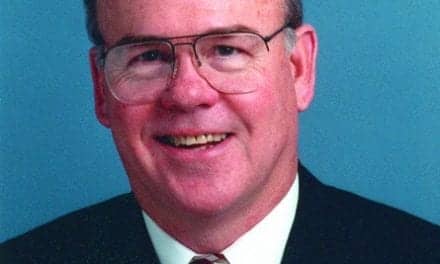Staff Standpoint | April 2022 Hearing Review
By Karl Strom, editor
Last month, this column looked at mergers and acquisitions (M&As) in hearing healthcare, using my almost-patented Merge-o-Meter—an exquisitely unscientific and mostly useless tool for gauging M&A activity. What it showed was that M&As appear to be on the rise.
You can look at M&As with a glass half-full or glass half-empty perspective. On one hand, increased M&As generally point to a growing and dynamic market, with companies looking to expand into new areas, create new or exploit existing synergies and technologies between companies, and increase their economies of scale and efficiencies—all of which has the potential to reduce prices and provide greater choice for consumers. On the other hand, M&As can increase the power of companies, reduce or eliminate competition, and, in certain cases, reduce product/service choice (for a more detailed discussion, see Robert Traynor’s article “Survival Strategies in a Competitive Hearing Care Market” in the June 2018 Hearing Review).
Because the global sales of hearing aids remain relatively small (17-20 million units), there is a fairly good argument for further consolidation among the five major global hearing aid manufacturers (Sonova, Demant, WSA, GN, and Starkey). However, what’s more interesting at this point in time is the continued purchase of retail dispensing offices and networks. Amid all the hand-wringing about over-the-counter (OTC) hearing aids and online hearing solutions, it turns out that global hearing aid manufacturers are extremely bullish on “professionally dispensed devices” and continue to place a premium value on brick-and-mortar practices. For example, in just the past year, WSA purchased My Hearing Centers ($30 million in annual revenues), HearingLife [Demant] purchased the AudPractice Group (APG, 41 hearing centers in three states), and in January, Sonova purchased the Alpaca group (220 clinics for $310 million).
Related Article: Industry Consolidation, Act 2?
What does this mean? Well, for one thing, if you own or work in a hearing care practice, it means you still have a lot of value and the “safe money” says you’re not going away. But, with all the market disruption and online threats, why purchase brick-and-mortar businesses?
First, it should be acknowledged that some M&As are about companies simply buying distribution, and this is particularly the case when organic sales growth is harder to come by. Certainly, that has happened in the past and may be continuing. However, organic growth for global manufacturers has been fairly high. So this leads to at least two other possibilities:
1) The “defensive play.” With the coming of OTC hearing aids and possible entrance of huge well-funded firms with well-known brand names (Bose, Apple, Samsung, etc) competing for consumers who have mild-to-moderate sensorineural hearing loss, buying up as much of the professional channel makes sense because that market is safest for retaining units and revenue. Dispensing practices are finite and they’re extremely difficult to create and grow.
2) The “offensive play” and betting on the blended care distribution model. Another reason is the potential for the blending of online sales, teleaudiology, and professionally administered in-person care. The “blended care model” continues to evolve and is almost certain to become a more important component in the sale of future hearing devices. Earlier last year, I wrote in this column about how the blended care model is resulting in a diversity of companies (eg, Lively, hearX/Lexie, Audicus, Eargo, etc), success stories, and disruptive elements (see “The Rise of the Disrupters!” in the March 2021 HR). The grandfather of these is probably Blamey Saunders Hears in Australia (now part of Sonova), which combines online marketing, telecare administered by hearing care professionals, and hearing care clinics to meet patients “on their terms”—providing consumers with on-the-go adjustments and convenient follow-up options.
Although still uncommon, some forward-thinking hearing care practices are now focusing on the implementation of telecare services, and the Audiology Interstate Compact should accelerate this trend by allowing professionals to practice and compete in multiple states without having to obtain additional state licenses. In my view, the implementation of telecare—for audiologists and hearing aid specialists—is probably one of the smartest things a hearing care business can do right now (along with unbundling products from services) to increase your practice efficiencies and value, while hedging against future disruptive elements. Beyond that, as the lead article in this issue of Hearing Review points out, facilitating person-centered care (in-person and remotely) wherever and whenever your patients/clients need you is one of the best defensive and offensive plays a hearing care business can make. —Karl Strom, editor
About the author: Karl Strom is editor in chief of The Hearing Review and has been reporting on hearing healthcare issues for over 25 years.
Citation for this article: Strom K. M&As, the blended care model, and teleaudiology. Hearing Review. 2022 Apr;29(4):6.






